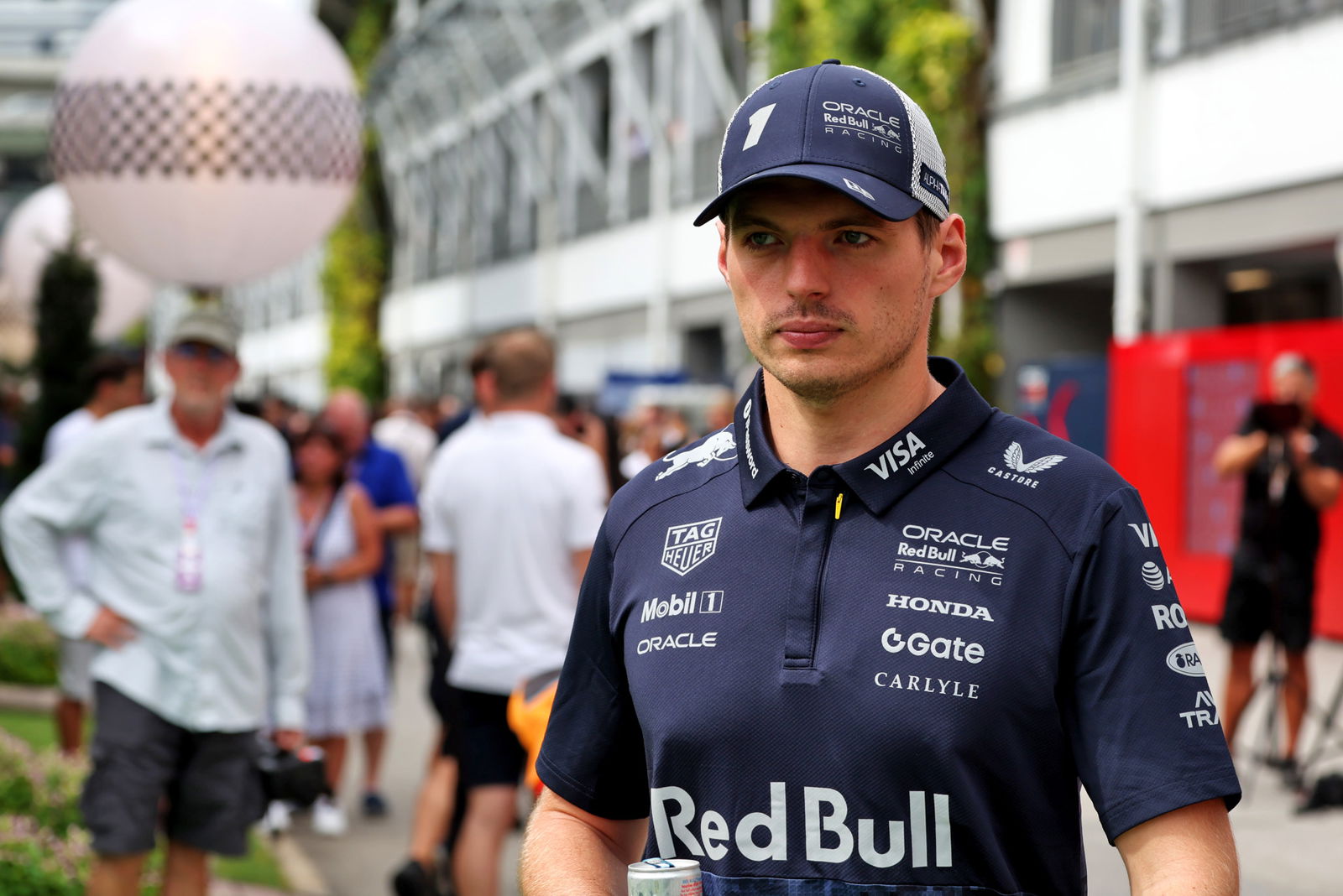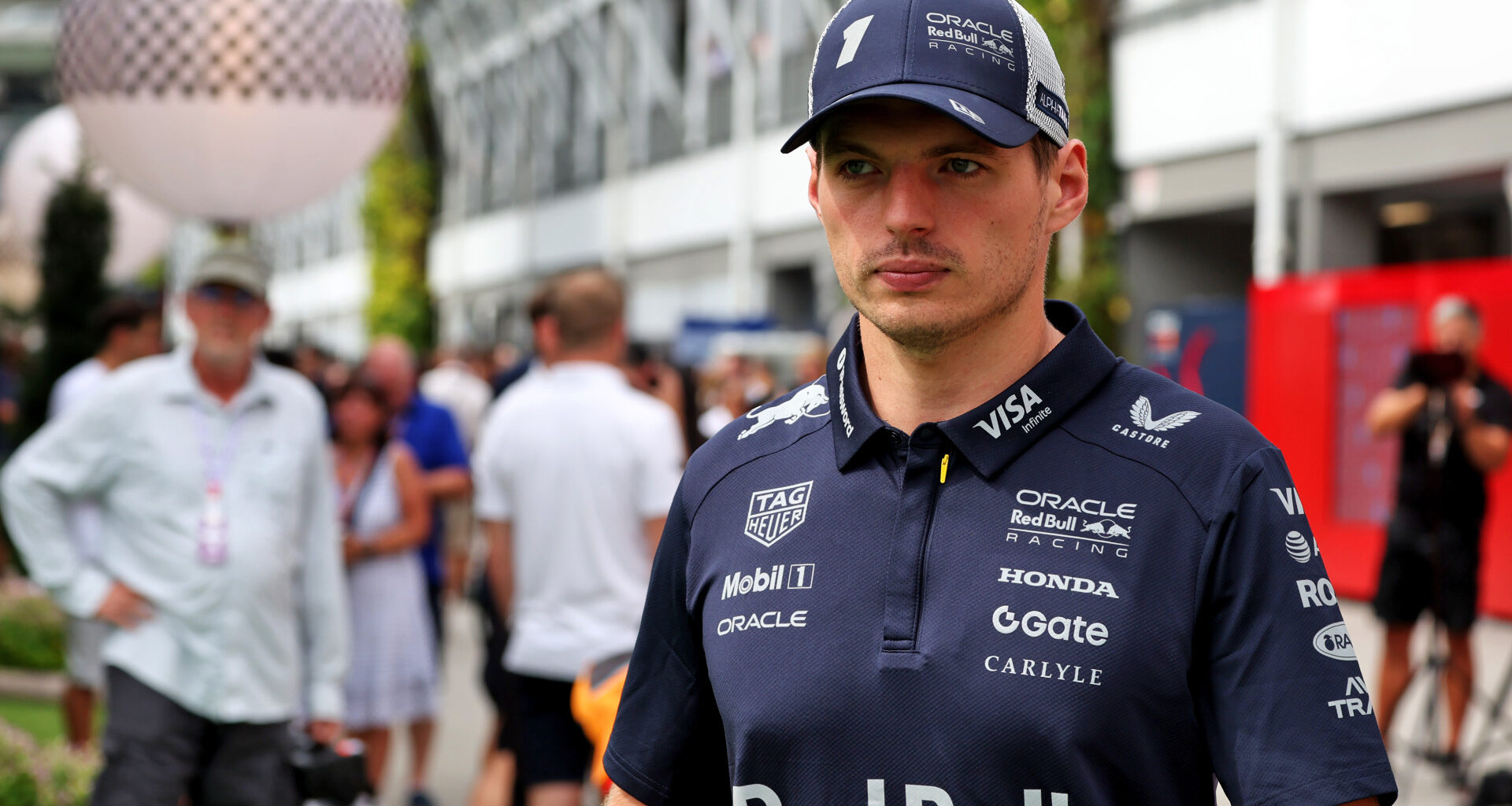
Max Verstappen has spoken out about the FIA’s plans to make cooling vests mandatory in 2026. Image: XPB Images
The four-time world champion trialled the vest on Friday around the Marina Bay Street Circuit but opted against wearing it for the remainder of the weekend, despite temperatures exceeding 31 degrees celsius and sweltering humidity.
“It doesn’t bother me that much, and it gets hot anyway,” Verstappen said, speaking to Dutch broadcaster Viaplay.
“A little sweat is okay, and that cooling vest gets hot after 15 to 20 minutes, so there’s no use for it.”
The FIA issued its first official heat warning in F1 this weekend, a measure that can be triggered if the forecast exceeds 31C up to 24 hours before a race.
When a warning is issued, teams are required to install the cooling system for drivers who choose to wear it, although the vest itself is not yet compulsory. Drivers who opt out currently carry an extra 0.5kg of ballast to maintain parity.
Verstappen’s main objection, however, is the prospect of being forced to wear the vest in future seasons.
“I haven’t used the vest. I’m also not intending to use it because I feel like this needs to be a driver choice,” he said after qualifying.
“Of course, from the FIA side, they will always throw it on safety, but then we can talk about a lot of stuff that can be improved on safety, including pit entries in certain places.
“I think that has a bit more priority than a vest in the car because I don’t like it.”
He explained that the vest’s design made it unsuitable for modern F1 cockpits.
“I don’t like the tubes that are on you, on your body, with the belts that go next to you. Then they can say it’s a bad design.
“I disagree. It just needs to be an option for the drivers to choose. Some like it, some don’t, and that’s fine. It should be a personal preference,” Verstappen said.
He also questioned the practicality of fitting the system into current cars.
“In GT cars or prototypes you have a bit more space to put stuff or at least put the cables. In our cockpits it’s so narrow that there is no space, or at least not enough space.
“And that is also a little bit of a problem I find. Plus, where are you going to put the dry ice? The cars are not designed really to have this extra kind of space, and within 15, 20 laps, it’s anyway gone.
“And then you have hot water… or tea.”
The FIA clarified that a mandatory introduction of the vest in 2026 is under consideration but not yet finalised, and discussions with drivers will continue.
George Russell and Oscar Piastri offered their own perspectives on the vest following qualifying.
Russell said he would “run it” and noted he had trialled it in previous races, adding that while improvements had been made to car cooling systems, testing remains limited.
“It isn’t the perfect solution yet… To be fair, the team have made a big improvement with the car cooling itself,” he said, noting that dry ice melts faster in Singapore’s heat.
Piastri was less definitive about his plans.
“I still don’t know if I’m going to use it,” he said.
“I used it yesterday… I think the initiative is good, but like Max said, having the choice to use it or not is important because there are benefits and downsides.”
The cooling vest was introduced following concerns over extreme conditions in previous races, notably the 2023 Qatar Grand Prix, when several drivers suffered heat-related issues.

